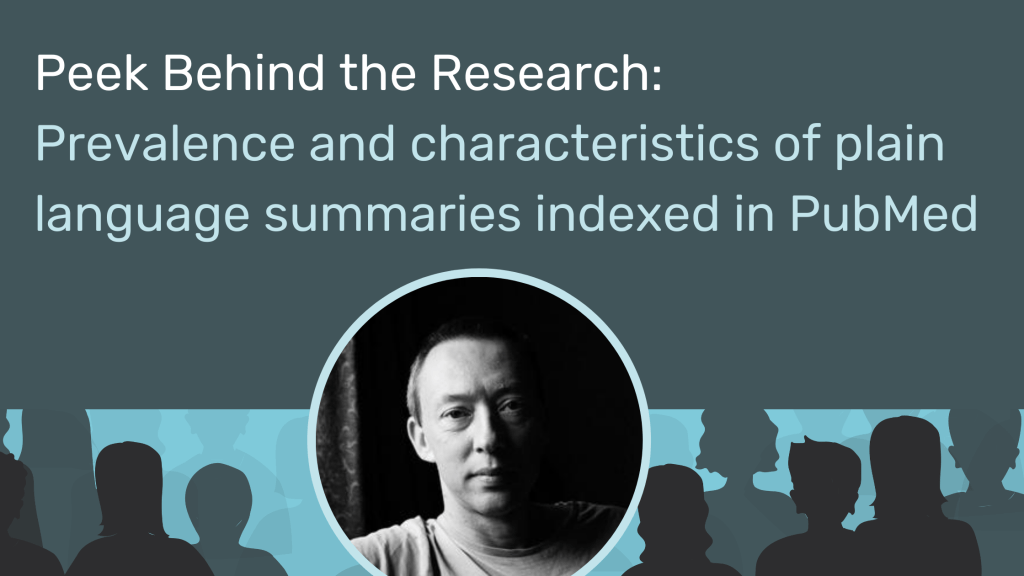- Written by Joanne Walker
Peek Behind the Research: Prevalence and characteristics of plain language summaries indexed in PubMed
In our third ‘Peek Behind the Research’ interview series from the 2022 European Meeting of the International Society for Medical Publication Professionals (ISMPP), Will Gatrell (Global Medical Publications & Communications Senior Manager, Ipsen) talks about his poster ‘Prevalence and characteristics of plain language summaries indexed in PubMed‘.
Read our interview in full below or access the poster here.
ISMPP-EU-2022-Prevalence-and-characteristics-of-plain-language-summaries-indexed-in-PubMed
Source: ‘Prevalence and characteristics of plain language summaries indexed in PubMed‘ originally presented at the 2022 European Meeting of ISMPP, January 2022.

Why is Ipsen interested in plain language summaries?
We committed to publishing Ipsen research open access in 2019 and remain one of only three pharmaceutical companies to make this commitment. However, we’re aware that our publications may not be understandable to a broad audience and, for some time now, have been discussing ways of making the content more accessible. One way to make publications more understandable is by including plain language summaries. In fact, we’ve recently committed to developing plain language summaries (PLS) for all journal articles that include data from human studies, starting from July 2022 [1].
Why did you carry out this research?
The recently published Open Pharma recommendations for PLS [2] provided the framework to develop these summaries, but we needed to assess the feasibility of making this commitment. Discoverability is a big issue, but PLS can be indexed alongside the scientific abstract on PubMed, if they’re written in the correct format. It’s not clear how commonly this is happening and we conducted this study to assess the prevalence of PLS in PubMed.
What were the main findings?
Indexing of PLS in PubMed is increasing, but it remains uncommon; we found the prevalence to be 61 per million articles listed on PubMed in 2021.
Are you looking to continue this research further?
Yes, we’re looking at what the barriers might be around journals offering PLS; we’d like them to be a standard component of a peer-reviewed article in same way everyone expects there to be a scientific abstract. I’m pleased to say that the Future Science Group is one of the publishers that does encourage PLS and publish them on PubMed.
Finally, what are your thoughts on the future of PLS and their place in medical/scientific research?
Developing PLS will make research more accessible and inclusive, and expands on our original commitment to publishing our journal articles with open access. It’s important that everyone can access high quality, credible medical information. There has been a concerted move to increase the uptake of PLS in medical research, mirroring the way open access has become commonplace over the last 5 years. In many ways the two go hand in hand, providing the opportunity to truly access the content of an article. Ipsen was the first funder to make a commitment around PLS; others are likely to follow. Our hope is that PLS will enhance the conversations between patients and their physicians, resulting in improved patient outcomes.
Acknowledgements: Will thanks his co-authors Kim Wager and Alison Chisholm from Oxford PharmaGenesis as well as Nisha Sheikh from Ipsen for their contribution to this work.
[1] https://www.ipsen.com/our-pledge-summaries-in-plain-language-for-all-journal-publications/
[2] Rosenberg A et al. Curr Med Res Opin. 2021:1–2. Available at: https://www.tandfonline.com/doi/full/10.1080/03007995.2021.1971185
